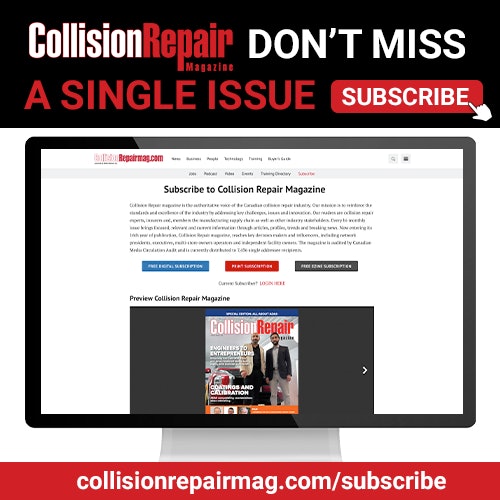
Toronto, Ontario — In this weekly edition of Collision Repair‘s EV/AV report, B.C. is getting millions from the government to install EV chargers, NHTSA has some policy changes for OEMs involving ADAS collisions, and the University of Waterloo is testing out their autonomous shuttle bus.
A Greener B.C.
In an effort to build a cleaner future for Canada, the government is investing $2.35 million to go towards EV chargers in B.C.
Funded by the Natural Resources Canada’s Electric Vehicle and Alternative Fuel Infrastructure Deployment Initiative, the investment will help to install 47 EV fast chargers and along the way create more jobs and strengthen the economy.
B.C. Hydro’s President and CEO, Chris O’Riley, says that EVs will be essential in creating a greener planet, and installing the chargers is just another step in supporting the government’s vision.
“This investment will make electric vehicle charging more accessible, paving the way for even greater electric vehicle adoption in B.C.,” said O’Riley. “Electric vehicles are a great option for British Columbians looking to reduce their impact on the environment because of our clean power, and we look forward to working with all levels of government and the communities we serve to expand our fast-charging station network.”
All fast chargers will be available to the public by the beginning of winter.
The what-a-bus?
University of Waterloo students will be able to ride an autonomous shuttle bus on campus called “WATonoBus.”
WATonoBus is believed to be the first autonomous shuttle bus system at a Canadian University with 360-degree cameras and a LIDAR system that can tell when pedestrians and cyclists are crossing or nearby. In case of emergencies, there is currently a backup driver in the bus at all times.
Aaron Sherratt, a lab technician who has been doing test runs for the WATonoBus and played the backup driver, says that students shouldn’t be afraid to try out the new autonomous bus when it becomes available to them.
“It is very rare that I need to take over at this point,” said Sherratt. “It only thinks about what it needs to think about, it doesn’t get distracted. It’s safer than your standard Uber driver.”
The WATonoBus travels around the University’s Ring Road and can go up to 20 km/hr. The shuttle is currently awaiting approval from the Ministry of Transportation and the University is hoping to have it running by the fall when students get back.
Next-level safety
OEMs are now being asked to report all “Level 2” ADAS crashes to the National Highway Traffic Safety Administration in the United States.
This new policy could bring a more vigilant eye to collision repairers’ work from regulators and automakers.
In a statement on Tuesday, Steven Cliff, NHTSA’s acting administrator said the new policy will help gather important information that ultimately leads to a safer experience for drivers.
“NHTSA’s core mission is safety. By mandating crash reporting, the agency will have access to critical data that will help quickly identify safety issues that could emerge in these automated systems,” Cliff. “In fact, gathering data will help instill public confidence that the federal government is closely overseeing the safety of automated vehicles.”
OEMs must report crashes that involve an ADAS system within one day, and an update is required ten days after the crash. At the end of every month, companies must report all the collisions that involved ADAS equipment, injuries and property damage to NHTSA.






















